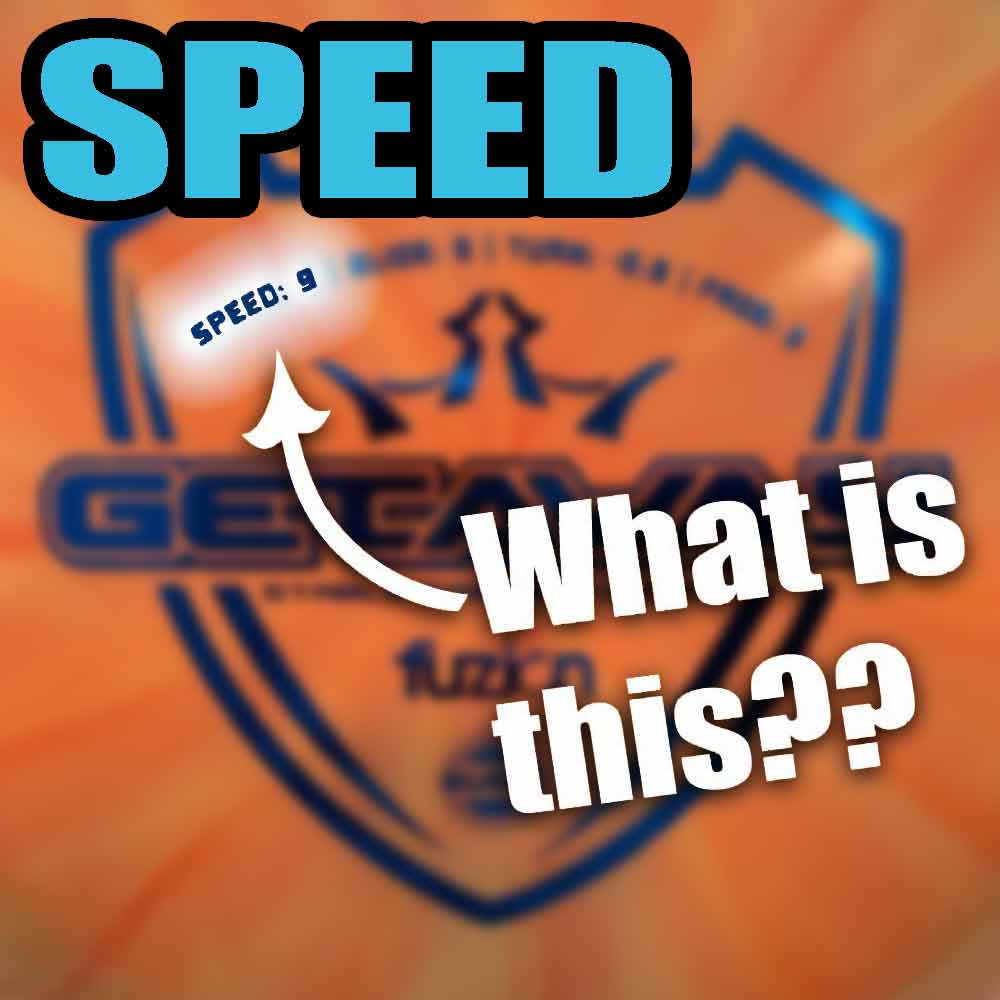
A Disc Golf Disc's Flight Numbers Series - Speed
What is Disc Speed?
The speed rating of a disc is a disc’s ability to cut through the air. In other words, how aerodynamic a disc is.
Speed is what divides discs into their respective classes. Generally speaking they are classified by the following:
- Putters: speed 1-3
- Midranges: speed 4-6
- Fairway Drivers: speed 7-10
- Distance Drivers: speed 11+


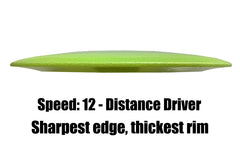
How do manufacturers determine disc speed?
Rim width is the driving factor in determining a discs speed. The wider the rim, the higher the speed rating will inevitably be. For example a distance driver will have a wide rim and a flat bladed edge. A midrange however will have a much thinner rim with a more blunt edge.

Key Notes About Disc Speed:
- One manufacturer's speed 12 disc does not necessarily equal another manufacturer's 12 speed disc. While they may be similar they probably aren't exact.
- Arm speed plays a factor in how a disc will fly
- The higher the disc's speed, the more arm speed required. If you don't get a disc up to speed it will not fly the way it is intended. To elaborate you may not access that -1 turn on a disc or a disc that has a 2 fade rating may fade left (on a RHBH throw) much harder than the number suggests.
- Overpowering discs can change a discs flight as well. Throwing a disc with more speed than required can make it turn over to the right (RHBH throw) or "flip". This is part of the reason why you see pros, the majority of the time, throw back hands with hyzer. Pros also tend to use much more overstable discs because of their arm speed. They will straighten the typical left curve out of a discs flight (See Figure 1 below), getting more distance and still seeing the reliable fade they want.
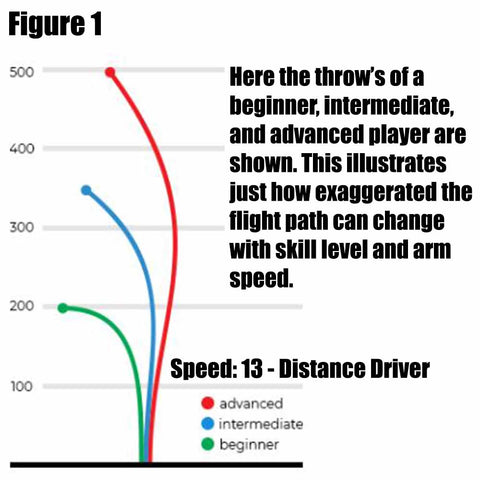
- We recommend new players not throw anything higher than a 7 speed disc to start. Master throwing your putters and midranges first. One of the quickest ways to develop bad habits in your form is throwing a disc that's too fast for you.
- Slower speed discs are much more controllable than high speed discs. That is another reason why we recommend throwing 7 speed discs or lower to start. Discs with slower speed will generally have a much narrower flight path (see Figure 2 below). This makes something like a midrange ideal for those straight wooded and tunnel shots.
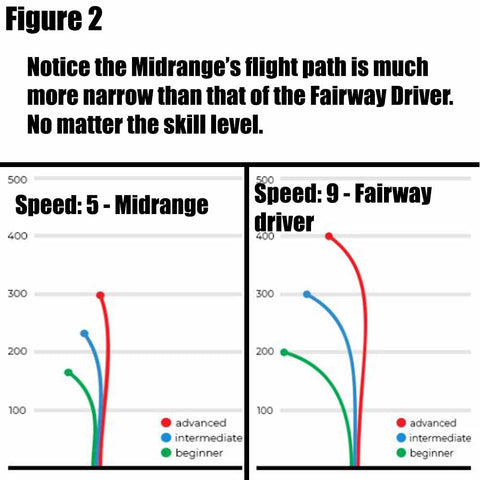
- Faster speed discs: Faster discs will have a much wider flight path than slow speed discs. They usually are going to want to fade more. You will often times see they will have little turn (-0.5 or -1) so they can get their full flight. Faster discs can be thrown on an anhyzer to counter act the fade and get a net straight flight. This is called a Flex Shot.
Choosing High Speed vs Low Speed:
When to use higher speed discs vs lower speed discs. This is tricky because it is all about personal preference and what you are comfortable with in your own game.
High speed discs can be helpful do to their high rate of spin. They can be used to “club up” and fight the wind. You can throw a low skip shot to get around obstacles or get out of a jam. The most obvious and common advantage to picking a higher speed disc is distance, of course. High speed discs are especially effective on open holes and courses.
Low speed discs are useful in a multitude of situations as well. I mentioned earlier that slower discs are more controllable and they are good options in the woods. Generally player’s upshot disc will be an overstable midrange or even an overstable putter. Because a low speed disc is spinning slower you can use it to shape shorter distance shots you never could with a fast disc. A great example of a pro doing this is, Nikko Locastro. Nikko is one of the best players in the world. Arguably the best part of his game is the ability to shape shots. Specifically with his speed 2 Westside Discs Sinus.
Situation Example:
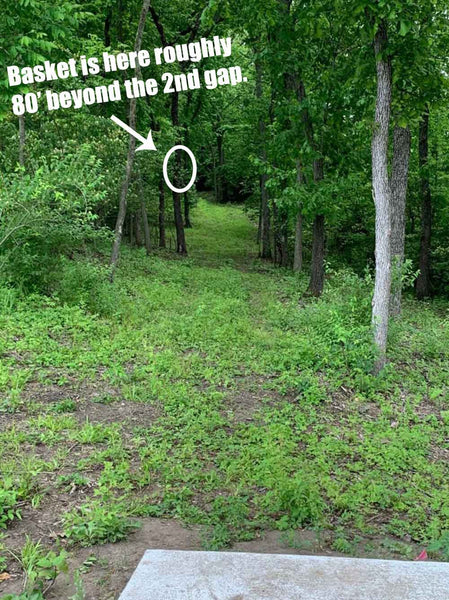
345' par 3 in the woods. You need to hit an early gap or you'll be in jail. Hit the gap and you’re free for ~100' until a slight uphill slope and trees on the right provide the next set of obstacles. Make it through those and you will find several guardian trees scattered around the basket.
Low speed option: As I touched on earlier, those controllable midranges are good for wooded straight shots. The safe play here for me is to reach for my 5 speed Dynamic Discs Truth that flies dead straight for me. My goal is to hit the gap, get up to that hill and have a short upshot to hopefully, get me close to the basket for the makeable par.
High speed option: Here is where I'm going for it. I'm going to use either my 7 speed understable Westside Discs Underworld, or my 7 speed understable Dynamic Discs Maverick for a hyzer-flip here. I want to get through the initial gap (toward the left side), let the disc flip up, carry straight and take my chances with the guardian trees. Poke n’ hope right? Best case scenario, I am looking at a tester birdie putt through the guardians. But it’s still a putt.
-
Look for a post in the future on “Shot Selection” for more situational examples and factors, besides speed, that affect choosing your next shot.
